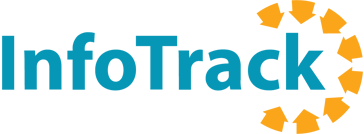Are you updated on the latest legal tech lingo? Study these terms to help deepen your knowledge of the tech tools that keep the legal industry thriving.
Are you equipped with the fundamentals of what legal tech can offer your firm? Like the legal field, technology has its own language, and studying the terms helps you develop the deeper understanding you need to speak the language fluently.
The following terms will help you understand the technical lingo behind the tools your firm uses for risk management, document management, organizational efficiency, and much more.
#1: Encryption
Encryption is a process that converts readable text, documents, or other data into unreadable, scrambled code, making it accessible only to those who have permission. Your obligation to confidentiality and privacy compliance makes encryption an important consideration in every tool that you use.
Due to the consistent threat of data security issues for law firms, encryption is the solution most firms employ to protect them from unauthorized access. Email accounts, messaging platforms, document management systems, and other pertinent programs that store and transfer data should all use encryption. Don’t worry, most already do.
#2: Integration
Tech tools don’t always play well together. But, integration makes it possible to accomplish multi-pronged tasks across applications. Creating changes to code in applications could take many hours of manpower if done manually. However, seamless integrations allow for an intermediary application to facilitate the exchange, keeping your workflow moving smoothly. Since integration software handles data, it’s important to know the different types of integration before you make any tech purchases to ensure compliance with data storage standards.
#3: Artificial intelligence (AI)
Technology that attempts to mimic human intelligence. Some practical software that is supported by artificial intelligence includes learning, speech recognition, and problem-solving. In legal tech, AI is used to unburden legal professionals and automate manual tasks that are tedious. AI-supported legal technology can be a little more costly on the implementation side, but worth the investment for some bigger firms.
#4: Automation
Automation is like AI, but it uses less complicated technology to complete repetitive tasks to maximize your firm’s efficiency. There are systems that work with document automation as well as process automation. Many firms choose to automate contract reviews, matter management, NDAs to keep those tasks from clogging their team’s workday. This allows you to allocate more of your legal support staff’s resources where you need them most. Firms that depend on their tech stacks to carry out most, if not all, of their operations functions are considered automated law firms.
#5: Benchmarking
Benchmarking involves first looking at historical data, best practices, and other pertinent information to tell you the story of what has been successful in the past. Then, using that to inform your protocol on how to handle managing the people, departments, and processes in your law firm. This allows you to perform a more informed comparative analysis of your ROI for vendors and projects, and other operations much more efficiently, and is usually included in your client management platform in your reporting section.
#6: Big data
Generally, big data is the technology that stores, organizes, and protects raw data. When choosing a vendor to handle data, compliance is key to ensuring you’re using the right solution. Some firms employ big data to create case predictions based on historical data on case outcomes and related information. Work with an IT professional to explore the benefits of big data in informing your strategic goals, operations, and other areas of importance.
#7: Change management
Change management is the process of moving a person, department, or an entire firm from one way of operating to a new strategy or tool. Many firms incorporate change management principles when re-tooling to avoid serious bottlenecks during implementation. When considering firm improvements, incorporate the reality of the time, energy, and details that need to go into the change before implementing the change.
#8: Client management system (CMS)
Allows you to manage your relationships with clients with much more efficiency and accuracy. Using a client management system, especially when it has the right integration partners, can ensure you are ethically compliant and keeping proper records of important points like calendar deadlines, court requirements, and more. Client management systems are dire to your longevity and can be customized to fit the needs of firms of all sizes.
#9: Cloud-based software
When a document or other file is housed in the cloud, this means that it is being stored on an online server, as opposed to your firm’s local server. This is a more reliable way to store data, as it can be accessed from anywhere, as long as you can connect to the Internet. More and more applications in legal tech are becoming cloud-based, allowing you to access and update your matters from anywhere.
#10: Document management system (DMS)
Using a DMS allows you to store your documents in a central location for access on-demand. A great option for firms looking to go green by eliminating paper waste. One of the special features of document management systems is versioning control, which is tracking and managing changes to your documents as well as who has accessed them. These applications are designed for firms needing to improve how they manage confidential legal documents or create an internal control system for who can access specific documents.
#11: Application Program Interface (API)
This won’t come up often but is happening frequently behind-the-scenes with many of your tech tools. An API is what allows the software to conduct secure data transfers from one application to another, seamlessly, such as when your client management system connects to your finance and billing software.
#12: Software-as-a-Service (SaaS)
Essentially, when a software vendor delivers their service over an agreed-upon amount of time. SaaS programs are based in the cloud and users usually access their accounts via unique credentials. The programs allow their users to store data within the cloud. It also keeps your firm from overloading your local server, as you wouldn’t have to run the programs on your own system.
By expanding your knowledge base into the technology realm, you become a legal professional that is more adaptable and trainable for firms using quality tech tools to support their operations. Bookmark a few legal tech blogs and subscribe to the Legal Up weekly update to help you unravel more about all the above terms and how technology continues to evolve in the legal field.





